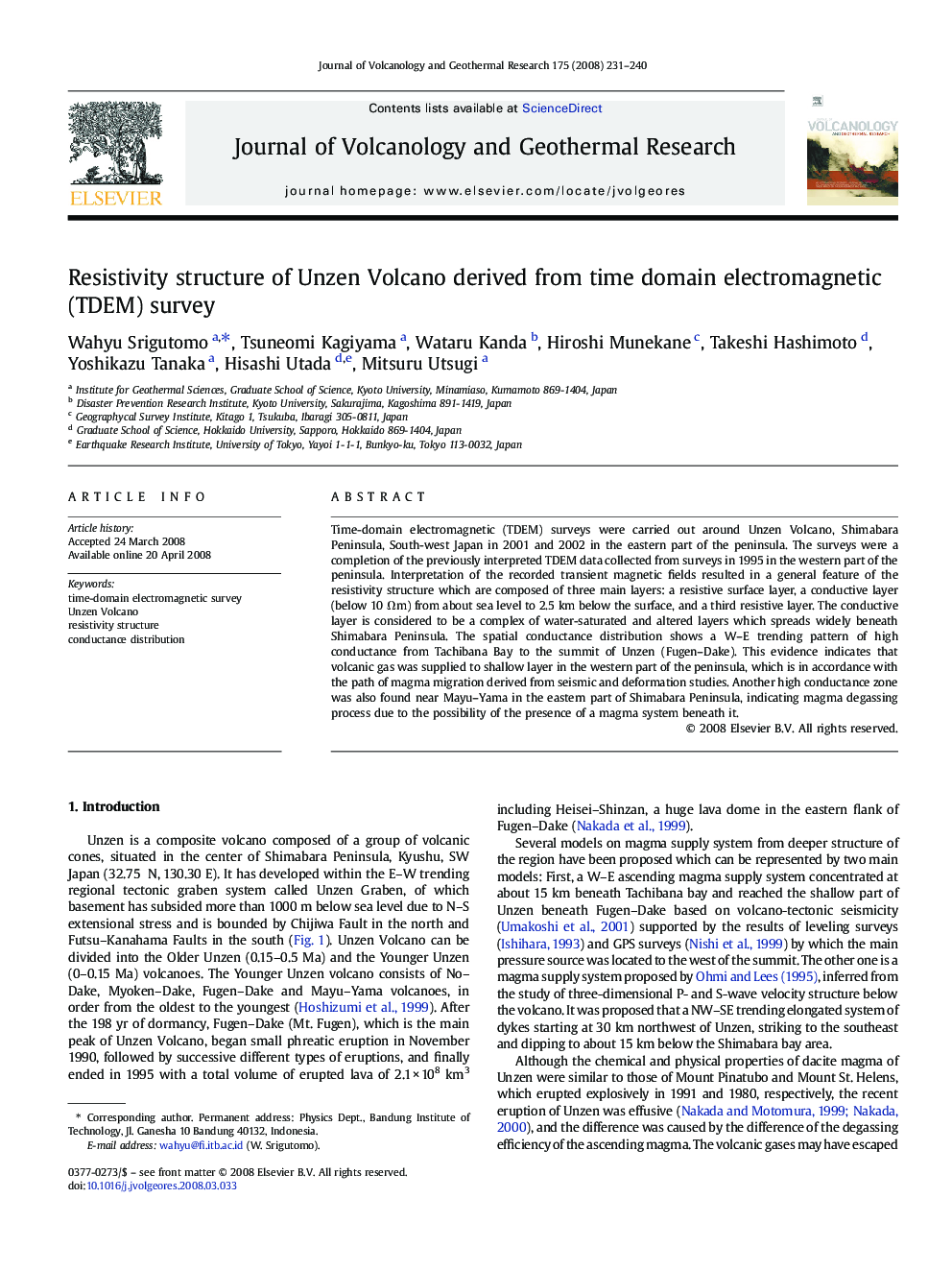| Article ID | Journal | Published Year | Pages | File Type |
|---|---|---|---|---|
| 4713642 | Journal of Volcanology and Geothermal Research | 2008 | 10 Pages |
Time-domain electromagnetic (TDEM) surveys were carried out around Unzen Volcano, Shimabara Peninsula, South-west Japan in 2001 and 2002 in the eastern part of the peninsula. The surveys were a completion of the previously interpreted TDEM data collected from surveys in 1995 in the western part of the peninsula. Interpretation of the recorded transient magnetic fields resulted in a general feature of the resistivity structure which are composed of three main layers: a resistive surface layer, a conductive layer (below 10 Ωm) from about sea level to 2.5 km below the surface, and a third resistive layer. The conductive layer is considered to be a complex of water-saturated and altered layers which spreads widely beneath Shimabara Peninsula. The spatial conductance distribution shows a W–E trending pattern of high conductance from Tachibana Bay to the summit of Unzen (Fugen–Dake). This evidence indicates that volcanic gas was supplied to shallow layer in the western part of the peninsula, which is in accordance with the path of magma migration derived from seismic and deformation studies. Another high conductance zone was also found near Mayu–Yama in the eastern part of Shimabara Peninsula, indicating magma degassing process due to the possibility of the presence of a magma system beneath it.
